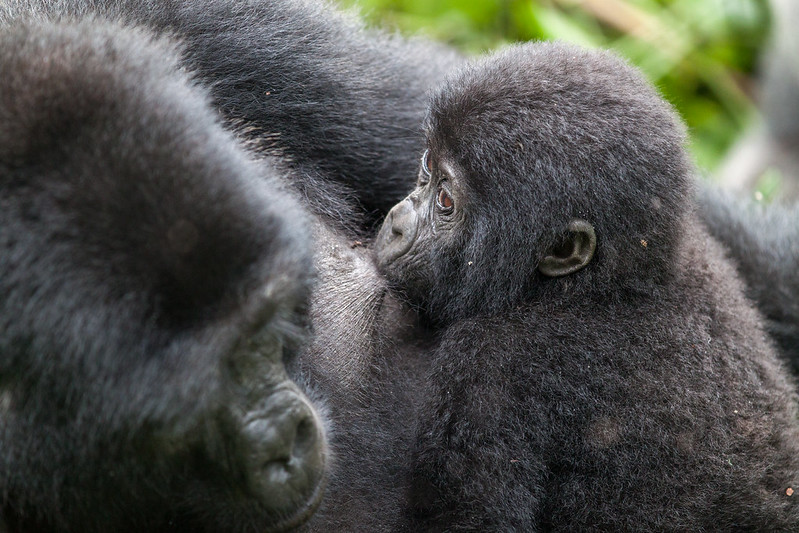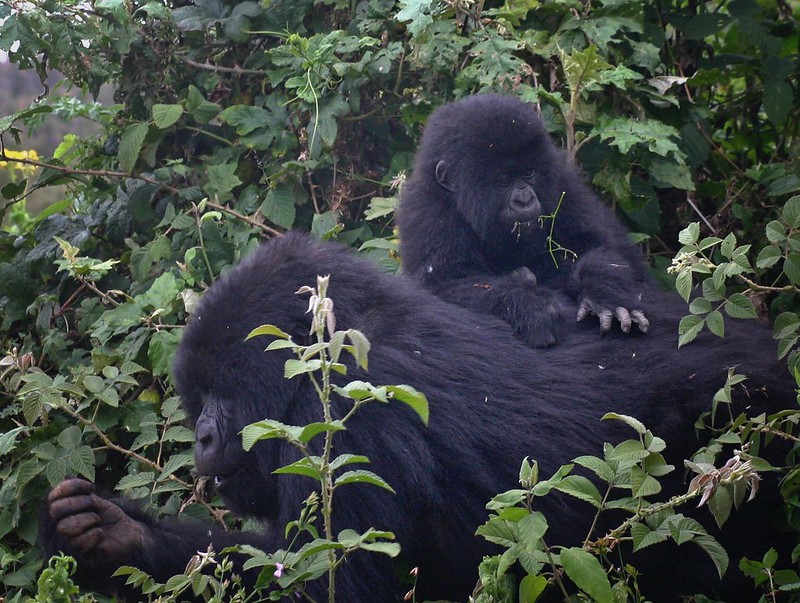How long does gorilla trekking take?
How long does gorilla trekking take? Numerous travelers intending to embark on a gorilla trekking safari in Africa frequently contemplate a prevalent inquiry: ‘What is the duration of gorilla trekking?’ Gorilla trekking in Africa is an exhilarating and adventurous experience. Gorilla trekking ranks as a premier tourism activities in Africa, drawing numerous individuals from across the globe to see and engage with these magnificent primates. Consequently, the opportunity to trek mountain gorillas in Africa is an exceptionally humbling and unforgettable experience.
Gorilla trekking is a pastime that requires trekkers to traverse dense forests within the park to discover gorilla families. Prior to trekking, tourists are advised to arrive one hour early at the park headquarters, where they receive a brief overview of the rules and regulations to adhere to during their trek. These include avoiding direct eye contact with the species, particularly the silverback, refraining from eating and drinking in their presence, disabling flash when recording videos and taking photographs, and maintaining a distance of approximately 7 meters from the species to prevent any potential harm, among other guidelines.
Furthermore, trekkers are organized into groups of no more than eight individuals, contingent upon their chosen gorilla group for trekking. Each group is accompanied by a park guide, whose responsibility is to navigate them via various paths, since they possess comprehensive knowledge of the park’s terrain. Furthermore, during the trek, tourists are encouraged to employ certain techniques to facilitate the swift identification of primate species. These techniques include recognizing recently constructed gorilla nests, tracking fresh gorilla footprints and fecal matter, and observing areas with broken tree branches, among others. Furthermore, upon identifying the species, tourists are allotted approximately one hour to observe them, during which they can gain insights into the species’ characteristics and behaviors, such as their feeding habits, nurturing of offspring, playfulness, and sleeping patterns, among others.

How long does gorilla trekking take?
This engaging activity typically lasts between 1 to 6 hours, contingent upon the location of the endangered mountain gorillas. This duration encompasses the trek from the starting point to the observation site, as well as the return to the national park’s meeting point.
Where to go for gorilla trekking
Gorilla trekking is optimally conducted in African nations, including Rwanda, Uganda, and the Democratic Republic of Congo. Consequently, for travelers intending to embark on a gorilla trekking safari, these locations represent the premier venues for tracking mountain gorillas. Furthermore, it is documented that approximately 1,004 mountain gorillas are thought to exist globally, with half of this population residing in Uganda, namely in Bwindi Impenetrable National Park, which shelters over 800 endangered mountain gorillas, as well as in Mgahinga Gorilla National Park. The remaining portion of the mountain gorilla population is distributed between Volcanoes National Park in Rwanda and Virunga National Park in the Democratic Republic of Congo.
A significant majority of these gorillas have been habituated and are quite safe for visitors to observe. Uganda possesses around 18 habituated gorilla groups available for trekking, comprising 17 groups in Bwindi Impenetrable National Park and 1 group in Mgahinga National Park. There are presently two gorilla groups in Mgahinga due to the migration of the Hirwa gorilla group from Rwanda’s Volcanoes National Park. Nonetheless, it remains uncertain if this gorilla population will establish permanent residency in the park or return to Rwanda.
In Volcanoes National Park, Rwanda, there are eight habituated gorilla groups available for visitor tracking, and similarly, there are eight habituated groups in Virunga National Park, Congo. Gorilla trekking excursions in all three nations occur in groups of no more than 8 individuals.
What is the cost of a gorilla trekking permit?

Due to the significant demand for gorilla trekking permits, it is recommended that trekkers secure their permits at least six months in advance. In Uganda, a permit costs approximately 800 USD per individual for foreign non-residents, 700 USD per individual for foreign residents, and 300,000 UGX per individual for East African citizens. The cost of a gorilla trekking permit in Rwanda is $1500 per individual, while in Congo, it is $400. Tourists may obtain a gorilla trekking permit via a reputable tour operator, such as Gorilla Trekking in Africa, or directly from the reservation office at the Uganda Wildlife Authority for treks in Uganda, the Rwanda Development Board for treks in Rwanda, and Virunga National Park in Congo. Utilizing a reputable tour operator expedites the acquisition of your gorilla permit. Reputable tour operators such as Gorilla trekking in Africa can assist you in obtaining a gorilla trekking permit in any of the three countries of your choice.
Essential items to pack for gorilla trekking.
If you plan to trek gorillas in any of the three specified countries, it is essential to pack suitable attire, including long-sleeved shirts or t-shirts, long trousers, sunglasses, a hat or cap, bottled water, snacks, a lightweight rain jacket, insect repellent, binoculars, a camera with extra batteries, a first aid kit, and a quality pair of hiking boots.
Best time to go for gorilla hiking.
Individuals interested in gorilla trekking are advised to travel during the dry season, specifically in June, July, August, September, December, January, and February. This period is deemed best as the gorilla habitats remain arid, facilitating hikers’ navigation through the dense foliage and steep inclines in pursuit of the gorillas.
Additional activities that can be undertaken in conjunction with gorilla trekking.
Following trekking, further activities to include in your holiday plan are wildlife game drives, boat cruises, city tours, nature walks, bird watching, chimpanzee trekking, mountaineering, hiking, and community culture visits, among others. Engaging the services of a reputable tour operator can significantly simplify the planning of your excursion. Explore our gorilla trekking tour packages for Uganda, Rwanda, and Congo. Furthermore, choosing to integrate these additional engaging activities consistently provides tourists with an exhilarating experience, resulting in unforgettable recollections.
